6 Ways to Donate to a Food Pantry and Reduce Food Waste
When almost 40% of our food supply ends up in the trash, are we surprised that far too many people in our communities go hungry? Or that we’re destroying our land and making it unable to produce enough food to feed all that live on it? One of the easiest steps in eliminating hunger is diverting perfectly good food from disposal and ensuring it ends up on our dining tables.

Imagine if every time you went to the grocery store, you purchased five bags of groceries and left two bags on the sidewalk as you walked into your house. Maybe you forgot about one. Maybe you decided the contents of the second weren’t pretty enough to be eaten, despite being perfectly nutritious and wholesome. Maybe one piece of produce was bad, so you threw out the whole bag, just for simplicity.
It might sound asinine, but it’s essentially the reality of food production cycles in our country. Oftentimes, we toss food in the trash because it doesn’t look pretty, isn’t packaged right, has a misleading Best Buy date, or a variety of other reasons despite the food being nutritious and valuable. According to ReFED, a national nonprofit dedicated to ending food loss and waste by advancing data-driven solutions, we produce 91 million tons of surplus food each year. Furthermore, almost 40% of the food produced in the United States goes to waste.
Take a breath and think about that. That’s just crazy! It’s so wasteful and hard to bear, especially when we consider the millions of people who endure food insecurity!
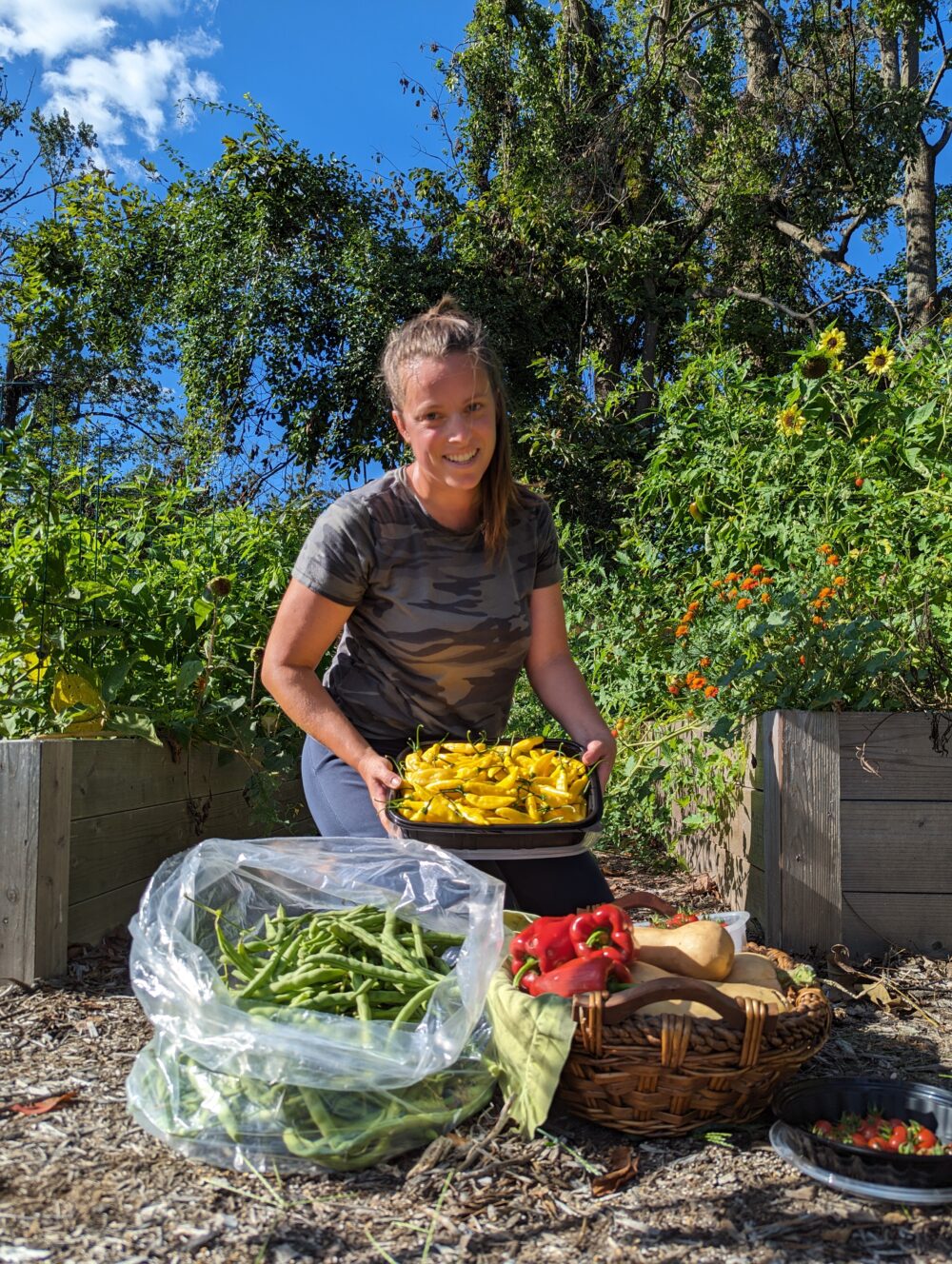
Where Do We Waste Food?
There are a plethora of disposal points for our food as it travels its journey through the food supply chain from cradle to grave (common terminology in sustainability and ecological life cycle discussions). We see food waste on farms, during travel, in grocery stores, in restaurants, and in our own kitchens.
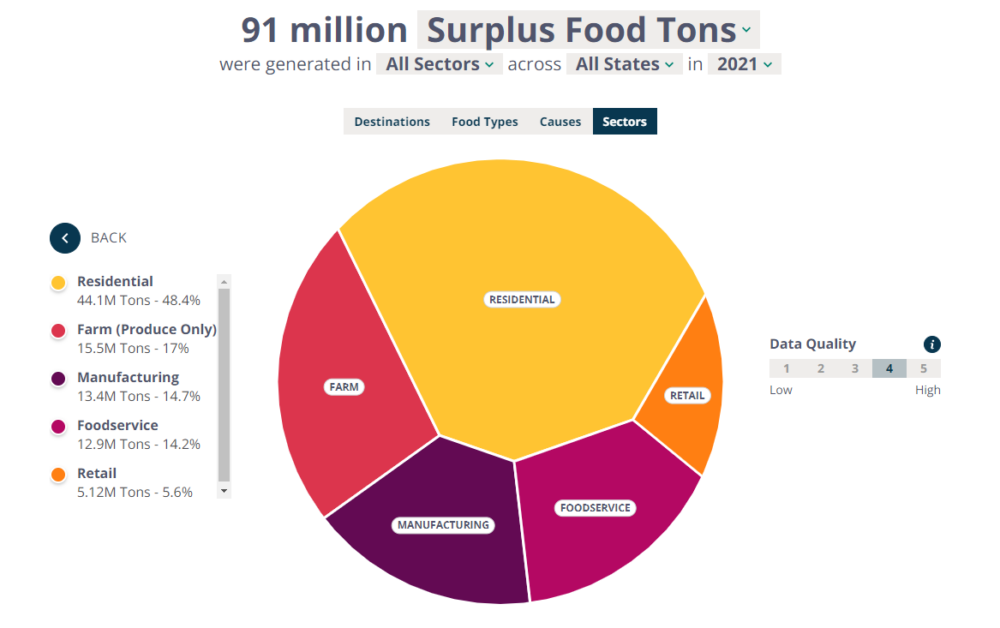
Food Left To Rot on Farms
Some food is left to rot in the fields (even though it’s perfectly safe to eat) because low sale prices make it unprofitable to harvest. In other words, the labor to collect and distribute the food costs more than farmers will earn for the products. Sometimes, there is insufficient labor to harvest the food.
On a side note, these circumstances should give us pause about how we treat and pay farm workers and how we pay farmers for the food they produce. We’re fine to throw away ugly produce, precisely because we don’t pay farmers and workers enough to produce it and make it worth our time and effort to consume responsibly.
Food is Too Ugly
Some things make it out of the field to be packaged but don’t leave the facility because they don’t meet the aesthetic standards of our grocery stores and restaurants, standards inherently driven by consumers’ demands. We’ve learned to reject produce for simple beauty imperfections.
Companies like Imperfect Foods (owner of Misfits Markets) are helping to bridge the gap in this space, ensuring that produce gets to consumers willing to eat ugly produce despite unreasonable grocery store standards. Many edible food items that are treated as inferior or “imperfect” foods are plenty safe for human consumption!
Food Waste During Transportation
We also lose food during transportation – between farms and warehouses, processing plants, stores, and restaurants. Food needs to be properly stored, and without proper cooling or storage, food can easily spoil. Some food travels thousands of miles around the world before it gets to us which creates lots of opportunities for food to go bad during travel.
Food Waste at Grocery Stores and Restaurants
Another contingent of food is lost at grocery stores and in restaurants. Grocery stores throw away abundant amounts of food. They overstock shelves to make them look full, even late into the evening when they know they won’t sell things. At night’s end, the excess is trashed.
Packaged items are thrown out in anticipation of expiration dates, many of which are “best buy” dates, not dates when food is no longer edible. The food is still perfectly good to eat.
Restaurants serve gigantic portions that we don’t eat, and then they throw away much of the excess.
Various food rescue programs and similar organizations have been working to get more food from commercial organizations to food pantries where they can use the excess food. Some of this happens at scale while other organizations rely on individual volunteers to pick up and package food for delivery to food cupboards.
Food Waste at Home
After arriving home, consumers continue to waste even more food. We make ambitious plans to cook healthy dinners every night, and the days get away from us. Food hides out in the back of the fridge and is forgotten. We serve larger portions to fill ever-growing plates, and we don’t eat everything we serve. For so many reasons, we buy far more food than we end up eating, and the remnants and leftovers rot until they end up in our trash cans, and ultimately our landfills.
6 Ways to Donate to a Food Pantry and Reduce Food Waste
While a certain amount of food waste is inevitable, there are many steps we can take to reduce our food waste and, more importantly, help more of our food make its way to local food banks where it can fill the hungry stomachs of our neighbors in need.
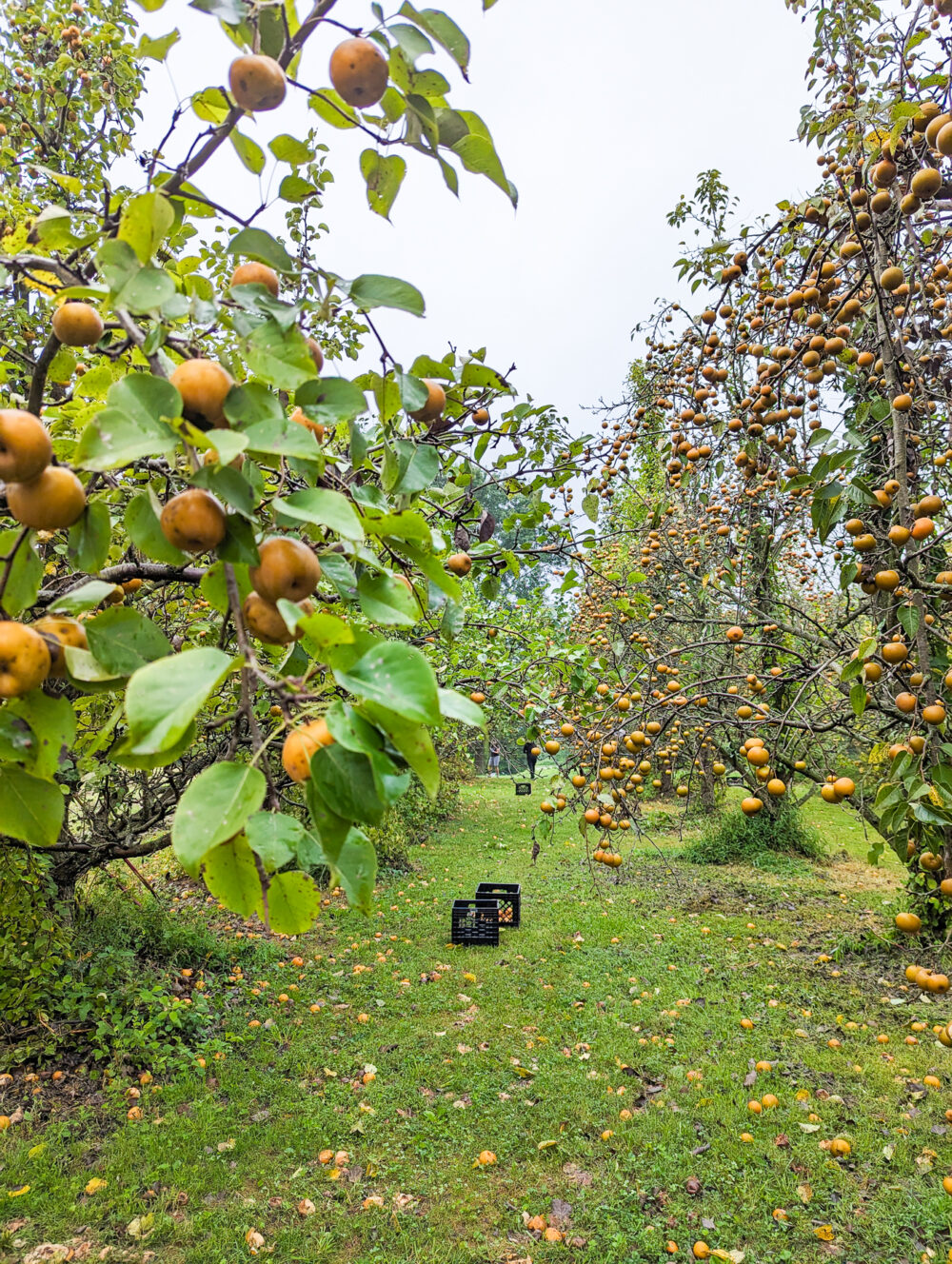
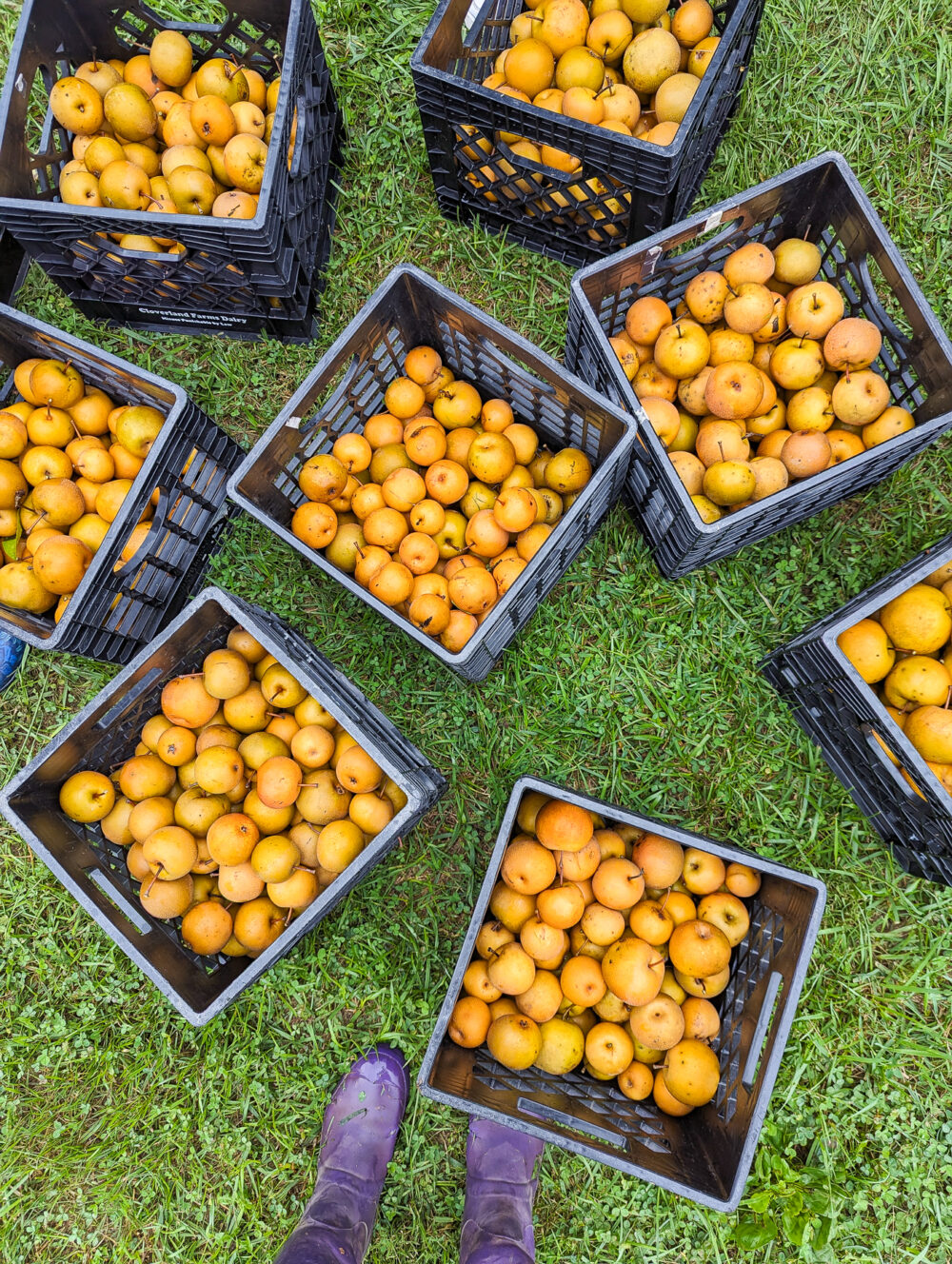
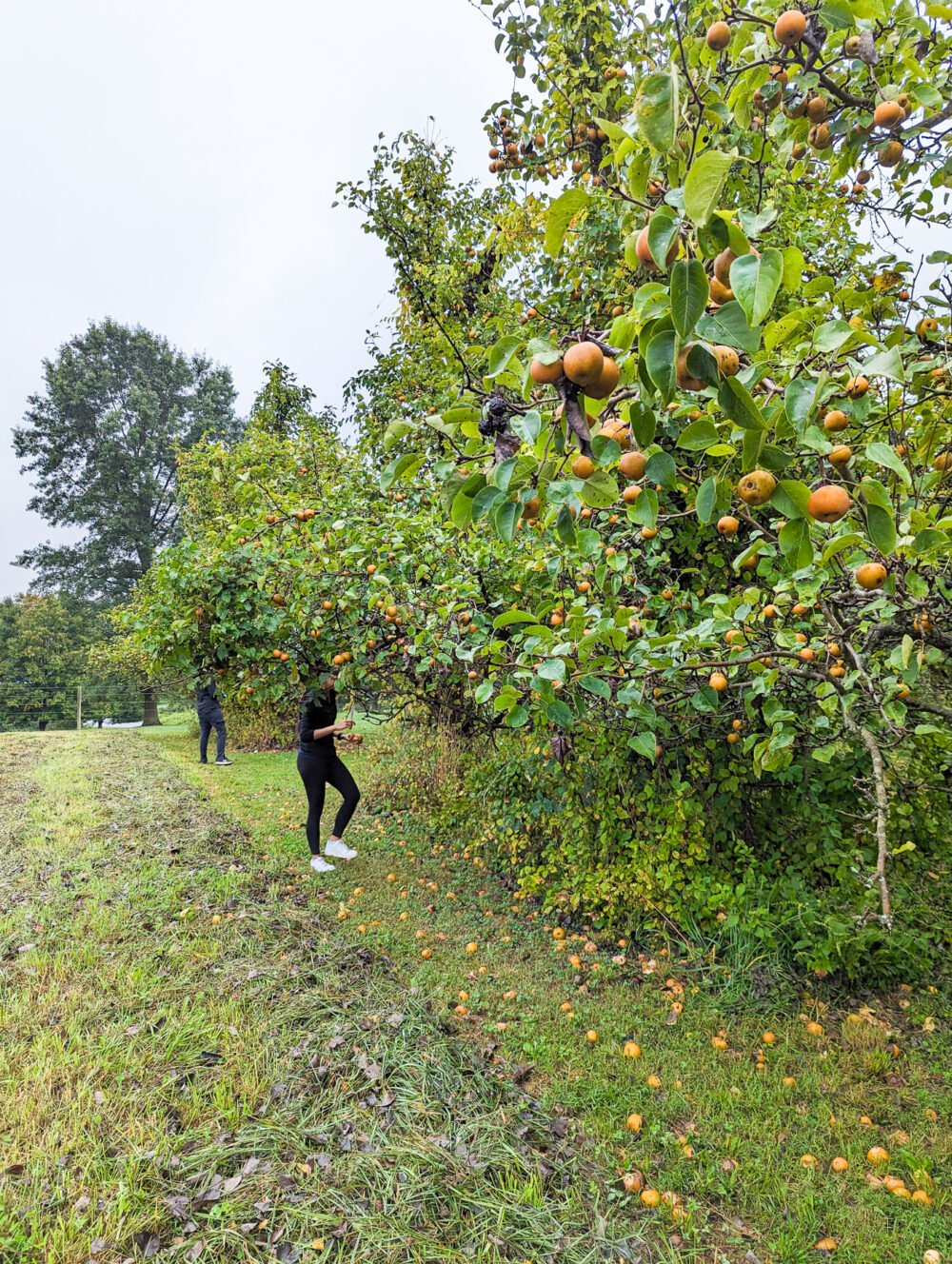
Donate Time: Gleaning for Good
Have you ever heard of gleaning? Until I started learning more about food waste, I was not familiar with the practice. It dates far back into history, but it’s something we could still do more of today. Gleaning is the practice of going back to farm fields and collecting the remaining harvest that farmers left behind. For the reasons I mentioned above, farmers don’t gather everything that grows in their fields.
Many food banks have volunteering opportunities to glean for the benefit of the local food bank. Some food banks offer the opportunities through their own organizations while others partner with third-party non-profit organizations or groups that organize the gleaning adventures. Family and friends can get together for a day out in the fields to gather produce that was not harvested on local farms. Then the produce is donated to the food banks to help fill their shelves with much-needed wholesome foods.
A couple of weeks ago, I volunteered with my local food pantry to pick pears from a local, private orchard. The property owner couldn’t pick all the pears herself. We stopped by for a couple of hours to pick ripe pears off the branches as well as gather up many perfectly good pears that had fallen to the ground.
With just a few sets of hands, we picked several containers of pears that the food pantry offered to their patrons. The pantry even partnered with a local bakery to use some of the pears for pear cardamom pies that were then sold to the public to benefit the food pantry. It was a great way to make the most of a food resource that would otherwise have gone to waste without a little community intervention.
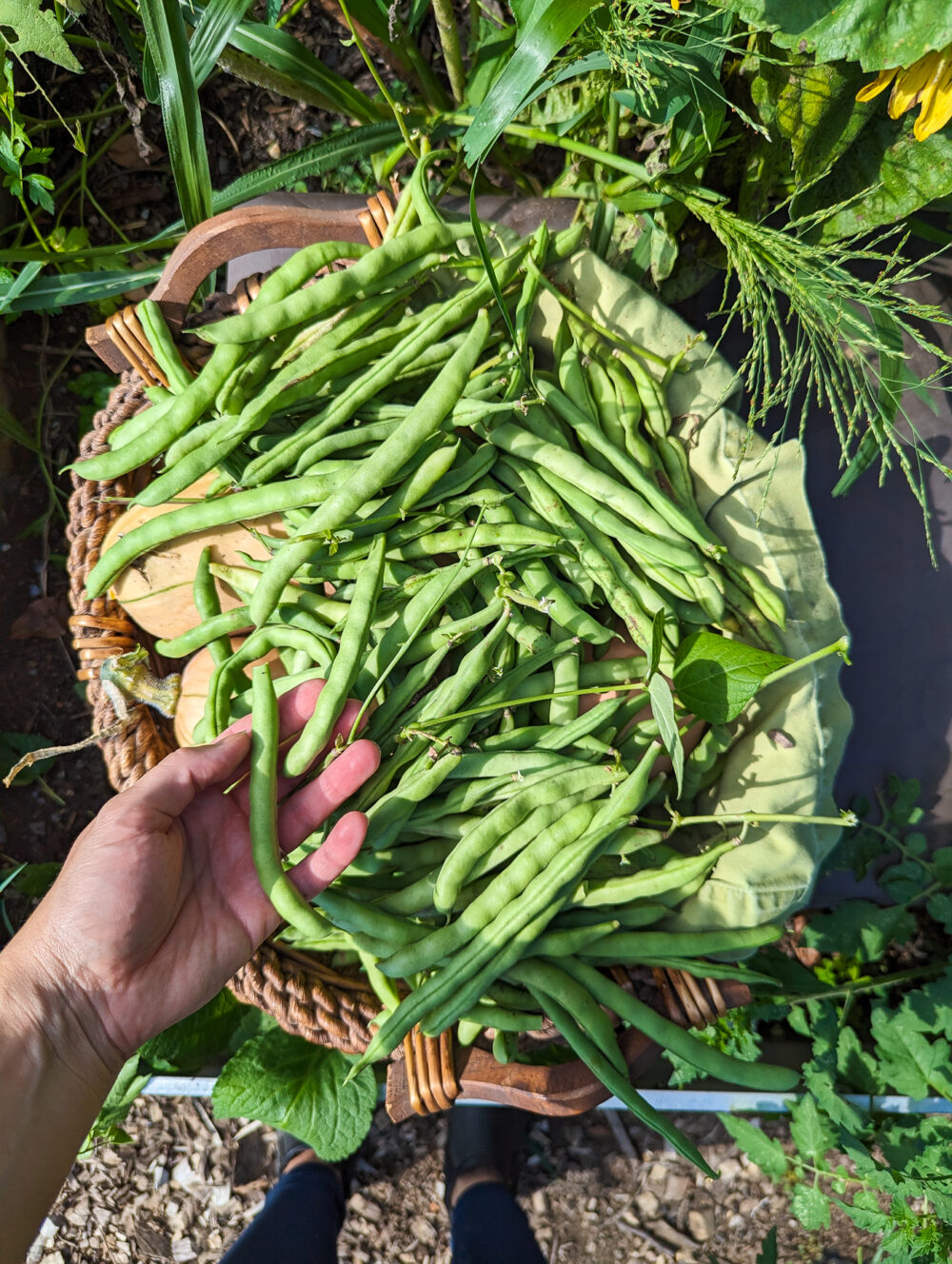
Donate Time: Get Involved With a Food Recovery Organization
Non-profit organizations around the country, some independent and some tied directly to local food banks, work to recover food that would otherwise end up in the trash. This food primarily comes from grocery stores, food distribution companies, and other businesses in the food industry that have excess supply.
The excess may result for a myriad of reasons. As I mentioned above, grocery stores typically keep a full stock on their shelves because the abundant appearance is more aesthetically pleasing. However, the extra items on the shelf don’t always have a home at the end of the night, so food banks can take the perfectly healthy and wholesome stock to provide to their patrons.
Grocery stores and other food distributors also adhere to ‘sell by’, ‘best by’, and expiration dates printed by manufacturers. These dates indicate dates by which the manufacturer believes the food will be in its best condition, not the date of expiration when the food is no longer edible. Without food recovery services, much of this food is tossed into the trash even though it’s more than suitable for people to eat.
In both of these situations and many more, food recovery organizations work with grocery stores and other food retailers to transport this food to food banks. MealConnect, part of Feeding America, is one organization that helps connect food distributors with local food pantries and non-profits to facilitate partnerships.
There are many local organizations, like Philly Food Rescue, Sharing Excess, and Cocoa Packs in my area, that do similar work as well. You can find organizations like this in your area by searching online for terms like “Food Rescue Near Me.”
Though not as widely understood as one might hope, The Bill Emerson Good Samaritan Act protects food distributors who act in good faith from liability issues that are inherent in food donation. Hopefully, as this regulation is more widely upheld, food distributors will become more comfortable donating more food.
If you have a business that could donate food, be sure to look for food rescue organizations in your area to find out how you can become part of their network and connect with the local food pantries in your area. Even if you don’t own a business that distributes food, we can all get involved in the food recovery efforts in our local area to help coordinate and execute the transportation of food to feed our hungry neighbors. Grab a friend and drive together around town getting good food to great people and families who need the food most.
Donate Time: Coordinate a Food Rescue Program at School
Many schools are beginning to implement sustainability committees that help create a variety of programs and initiatives that make the school more eco-conscious. I’ve seen parents and students create food-sharing programs in their lunch rooms (whereby they leave unopened food for their classmates to eat if they do not want it). Many schools are starting composting programs to reduce food waste.
If it’s an option at your school, consider working with the administration and food services teams at your local school to get excess food to the local food pantry. Not all food may be suitable for passing along to the pantry, but even if some of it can make its way to hungry neighbors and not end up in the trash, that’s a win!
It’s also a great way to bring to light conversations and awareness for students about food insecurity in their own communities. Such a program may even pair well with the student workbook about Discussing Hunger a friend and I made through Raising Global Kidizens, an organization we run that makes educational resources for young learners developed around the United Nations Sustainable Development Goals.
Related Reading: How to Start a Sustainability Committee at Your Child’s School: A Step-by-Step Guide + FREE Workbook
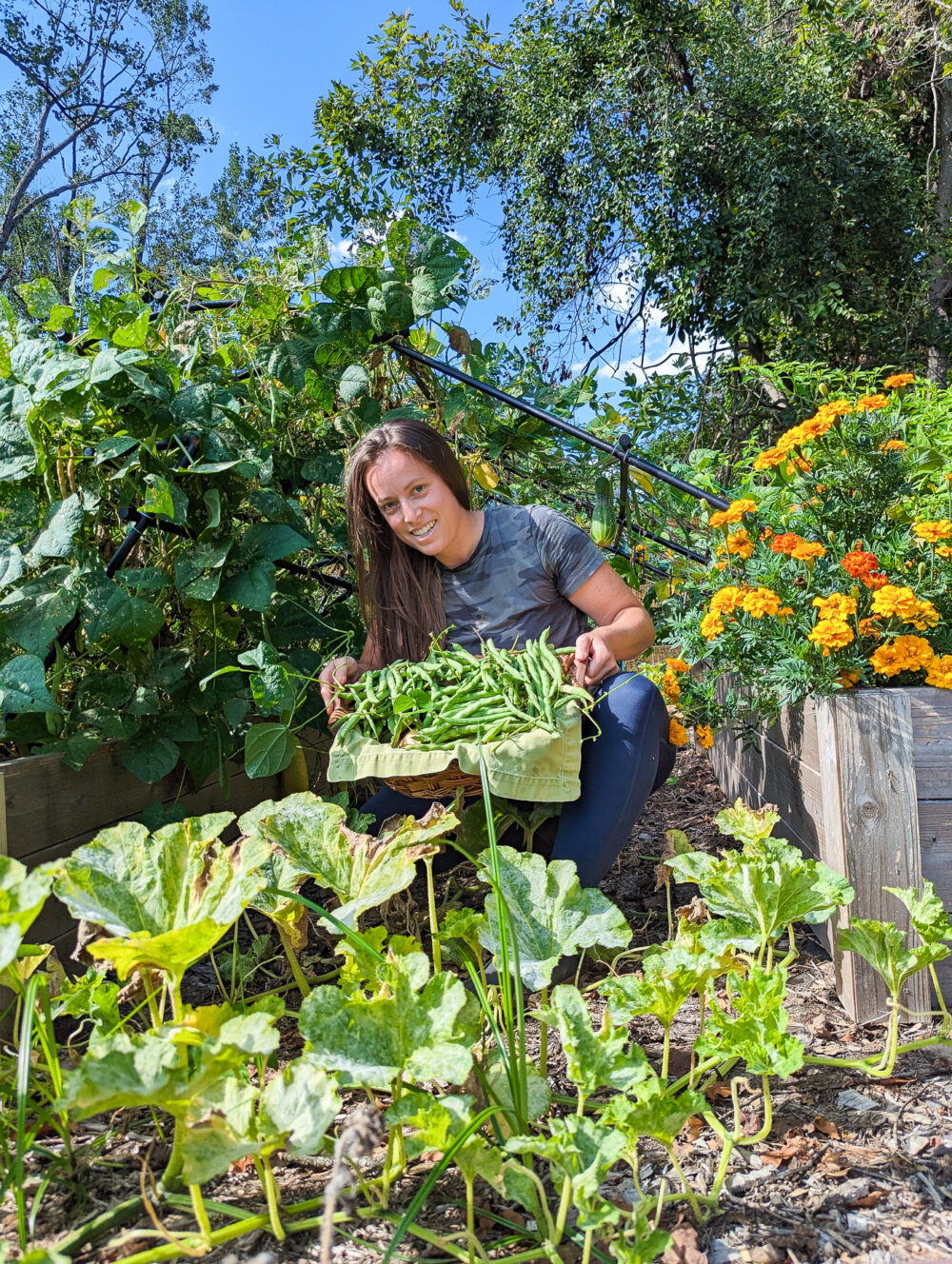
Donate Excess Food: Donate From Your Home or Community Garden
You may not grow food at the scale donated by grocery stores or restaurants, but food pantries are happy to take excess produce from your home or community garden when you have it available. Over the last month, I’ve had a ton of extra cherry tomatoes and yellow Peru peppers that my family won’t eat, so I dropped them off at the food cupboard in my community.
If you have a large space for growing nutritious food and have the time to grow excess, you could even ask the food pantry in advance what types of fresh produce are popular among their partons and then grow what people like. You’ll have to work with the climate, of course, but there are certain types of produce that last longer or are in higher demand at various community food pantries.
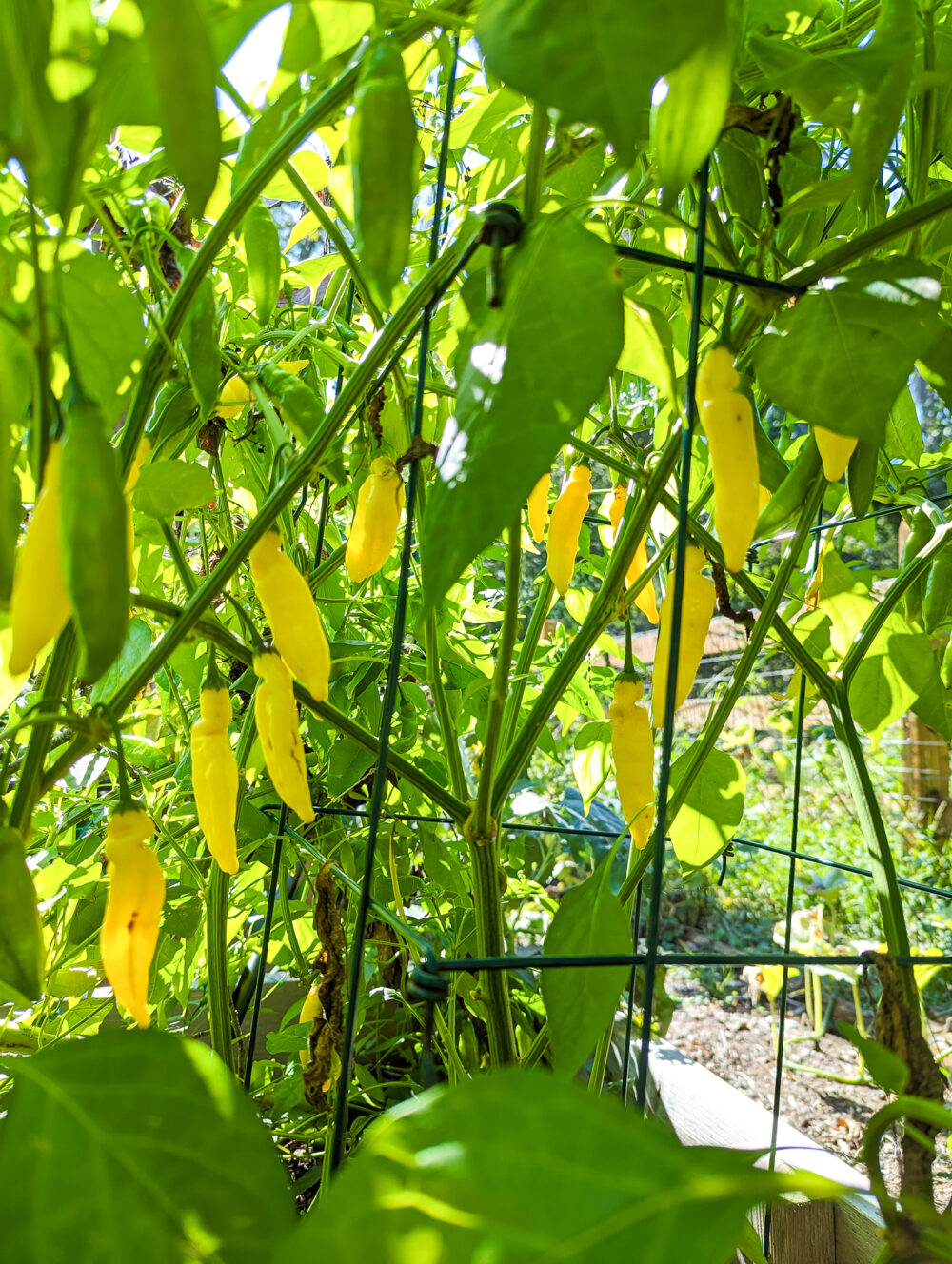
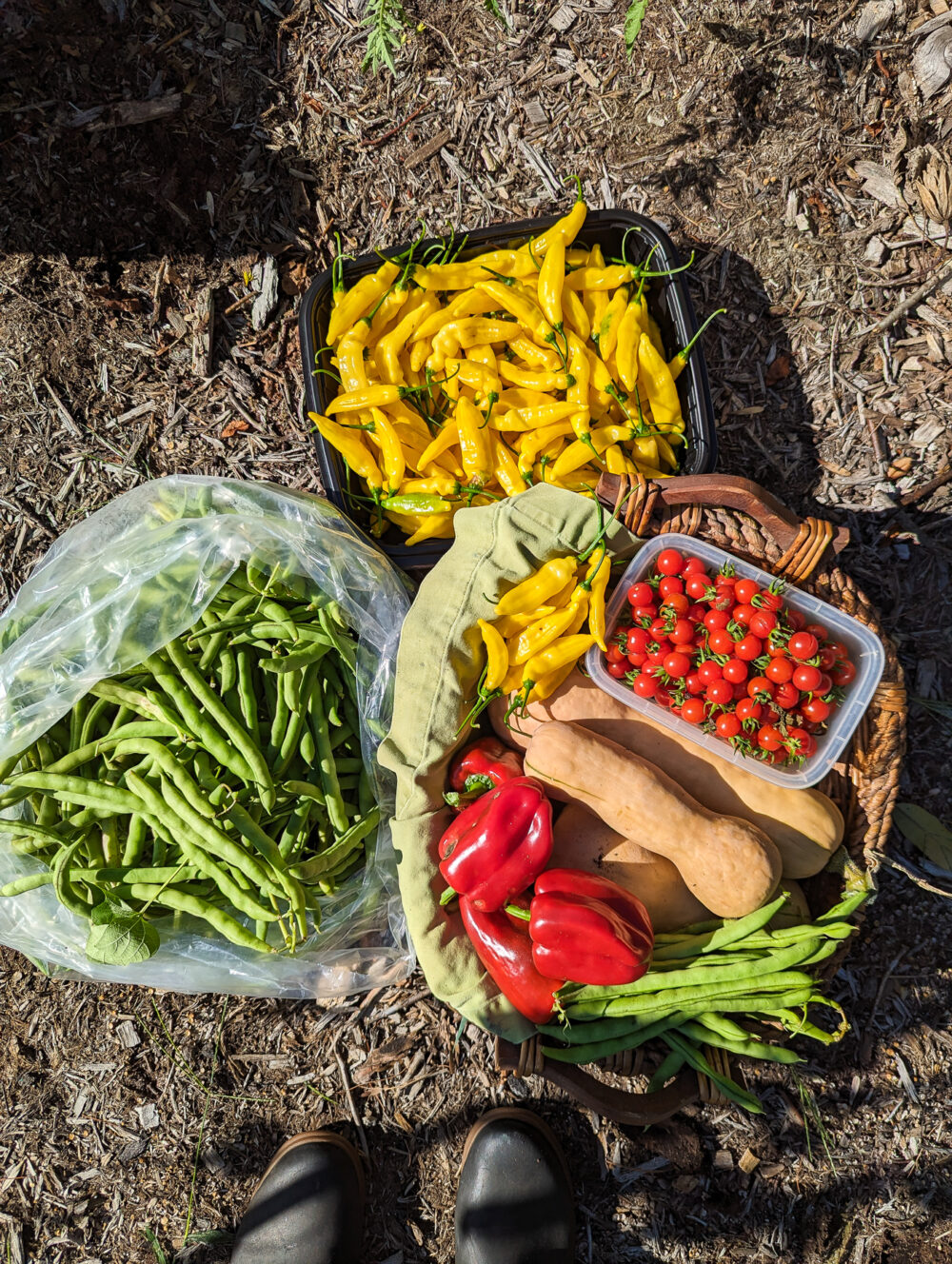
Donate Time: Host a Local Food Drive or Fundraiser
If you’re feeling particularly ambitious, host a local food drive or fundraiser to support your food bank. If you’re not sure where to find your local food bank, Feeding America has a directory of all of its partners, which is a great place to start. You could also just Google “food pantries near me” and reach out to them directly to learn more about what they need.
Encourage your family and friends to come together to raise money or collect food for your local food bank. Be sure to reach out to your food bank to figure out what they need; sometimes food banks get too many of certain types of food and not enough of others.
Donate Money: Give to a Food Bank or Pantry
You may not have time to volunteer or host a food drive. Instead, consider making a regular donation to a food pantry or food cupboard in your local area. Many people rely on these services to feed their families.
For those of us not experiencing food insecurity, I think it’s tough to imagine what it would really feel like. I think it’s even harder to understand how pervasive hunger is in a person’s life. Sometimes people joke about being “hangry” but it’s humbling to imagine that this is the “norm” for many people in our country.
It breaks my heart to think about a child trying to learn in school with a grumbling stomach distracting from the task at hand. As a parent, I can definitely understand how tough it must feel to not be able to provide your child with three meals a day.
Even with a small donation, we can help bring more food to the table for the families in our communities who are unable to fill their cabinets with wholesome food themselves.
Other Considerations to Help Your Local Food Cupboard
Learn More About What Is Safe To Eat
There’s a whole lot of confusion swirling around our communities about what food is safe to eat and what should be thrown out. All too often, we throw out food long before it’s gone bad or because it doesn’t look just right.
Have you ever thrown out a whole apple just because it had a bad spot on it? Would you buy the pineapple at the grocery store with the crooked top? Truth be told, most of us probably don’t even know that tons of produce are “imperfect” because that produce never makes it to the grocery store shelves (even though there is nothing fundamentally wrong with it).
Philabundance, the central food bank in Philadelphia, offers food donation guidelines for food pantries and food donors to help them better understand what can and cannot be donated. From the rules, you can see that Best Buy and Sell By dates are not the proper guidelines for when to throw food in the trash. In fact, they even accept a lot of food after its expiration dates. Many food items are safe to eat and have a longer shelf life than that shown on the package.
Be An Advocate In Your Community
Word of mouth is powerful. Most people have no idea how much food goes to waste. And why would they? Our food production is so far removed from the daily lives of most of the people who eat the food that it’s tough to expect everyone to understand how it traveled from farm to table. We waste food, in part, due to a lack of awareness of just how much wasted food is piling up and how much of an impact it could have if diverted to worthy causes.
As you learn more about just how much food waste is piling up in our landfills and leaving families in our communities hungry, spread the word. Tell others, kindly, about the small steps they can take to be advocates for more efficient and effective food distribution in our country. You never know how much of an impact a few casual conversations can have as they travel through the grapevine.
Don’t be afraid to invite friends to go gleaning together or support a local food recovery organization. Sometimes just a little nudge goes a long way.
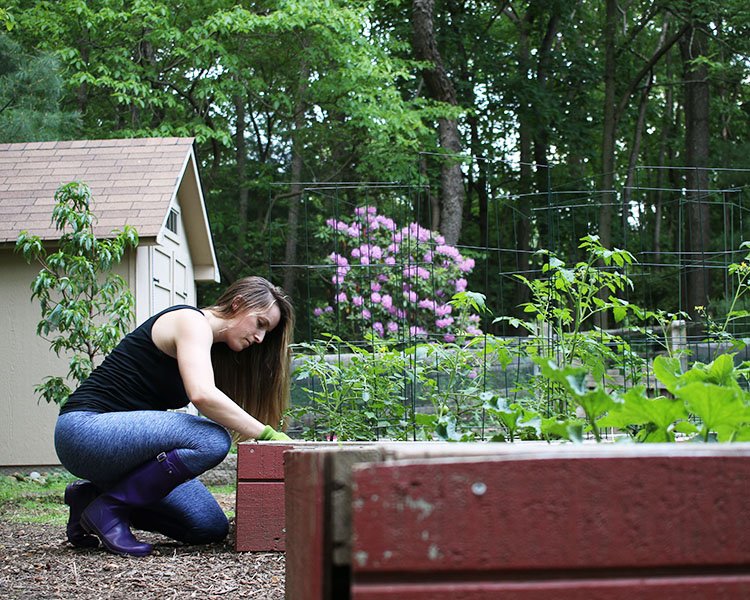
Some Change But Not All Change Requires Money
After graduating college, a donation to my local food bank was the very first large (to me) charitable contribution that I made. I know there are so many worthy organizations serving our communities, but there’s something about the simplicity of food that really strikes a chord with me. It’s so basic to our well-being and something each and every one of us can understand in a common language. We all know what it feels like to be hungry, some of us with more consistency than others, unfortunately.
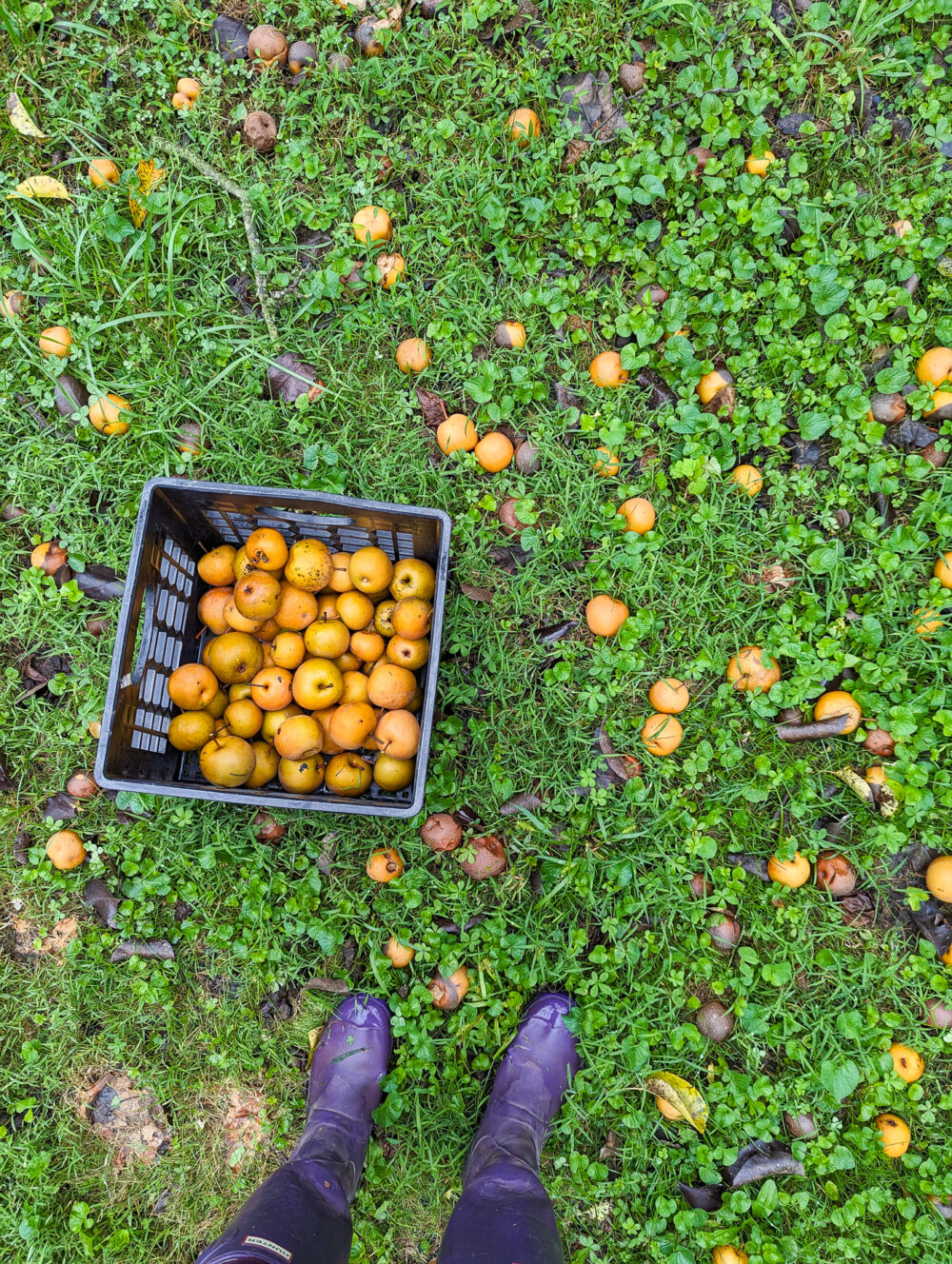
The more I learn about our food cycle and all the pitfalls and dumping points along the way, the more I believe the “fixes” for hunger aren’t just about more food. It starts with creating systems that make better use of the food we already have, and we all play a part in limiting the waste that we create.
Changing the systems we have in place costs money. Whether we’re paying to transport food from the grocery store to the food bank and safely store it at the food bank, building technology to more efficiently connect lost food with hungry stomachs, or redesigning the whole darn system to make it economical for all food to make it to our tables (instead of being left in the fields or tossed in the trash), it’s important that our food-related organizations have funding to support their efforts.
We can also make a difference regardless of the financial resources available. We can limit the waste that we produce. We can buy the “ugly” produce that might otherwise be tossed in the trash. We can volunteer at our local food bank or with a local food recovery organization. And we can speak up to remind others that 40% of our food ends up in landfills. That’s just not sustainable or beneficial to anyone.
What will you do today to help feed hungry neighbors in your community?
If you like 5 ways to donate to a food pantry and reduce food waste, you might also like
Versatile Snacks and Sides To Reduce Food Waste
Simple Tips To Reduce Food Waste With Kids
Find Hyperlocal Farm Food Delivery Services To Connect Farmers and Customers In Your Community

Jen Panaro
Jen Panaro, founder and editor-in-chief of Honestly Modern, is a self-proclaimed composting nerd and advocate for sustainable living for modern families. To find her latest work, subscribe to her newsletter, Stepping Stones.
In her spare time, she’s a serial library book borrower, a messy gardener, and a mom of two boys who spends a lot of time in hockey rinks and on baseball fields.
You can find more of her work at Raising Global Kidizens, an online space to help parents and caregivers raise the next generation of responsible global citizens.

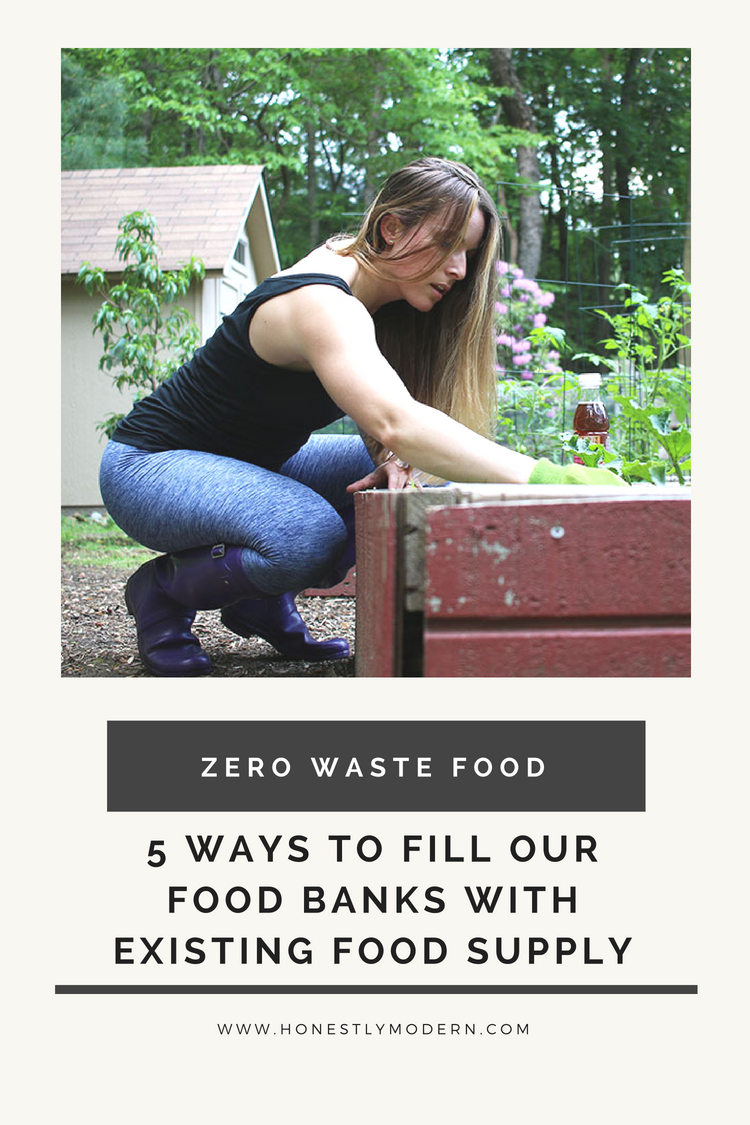

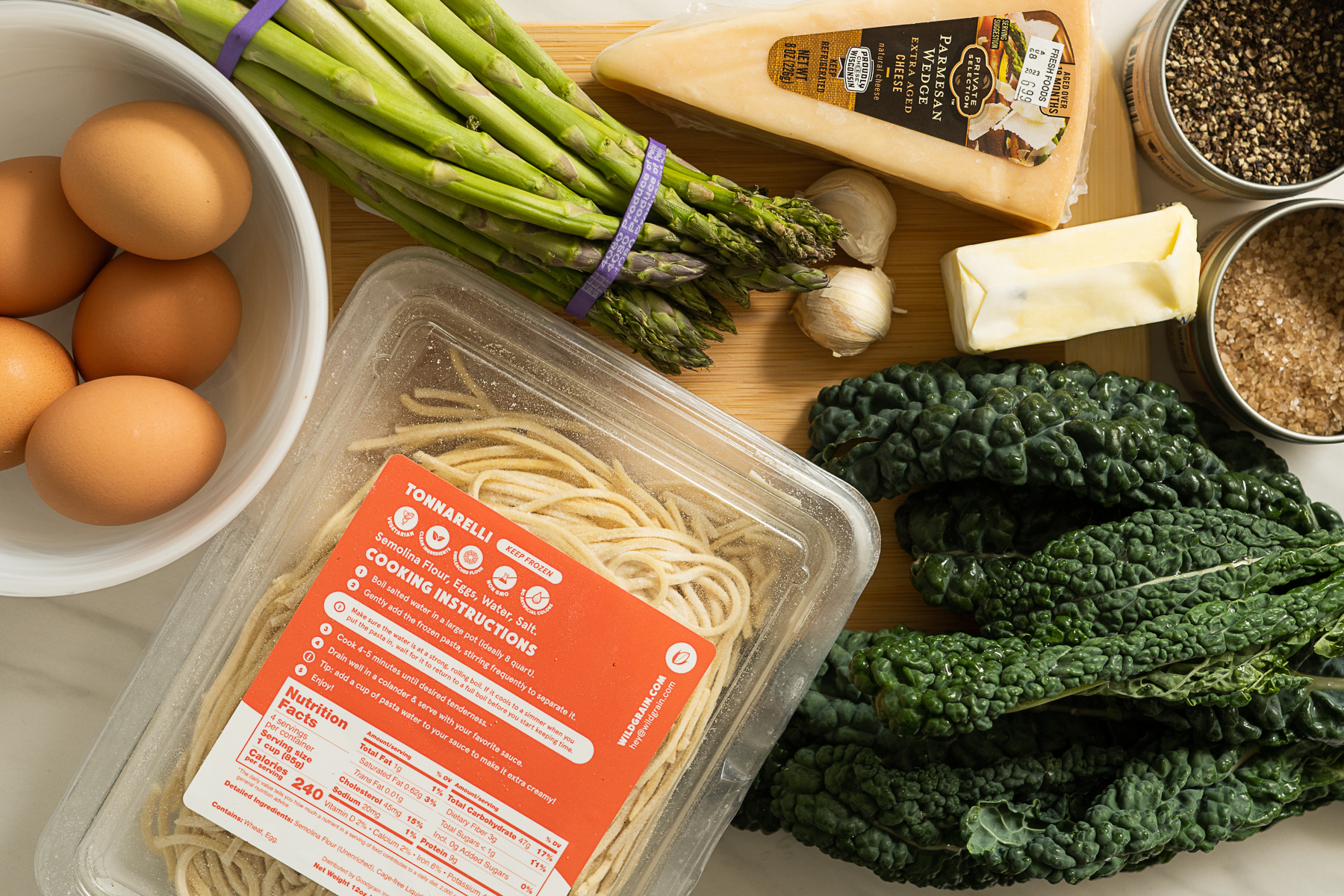
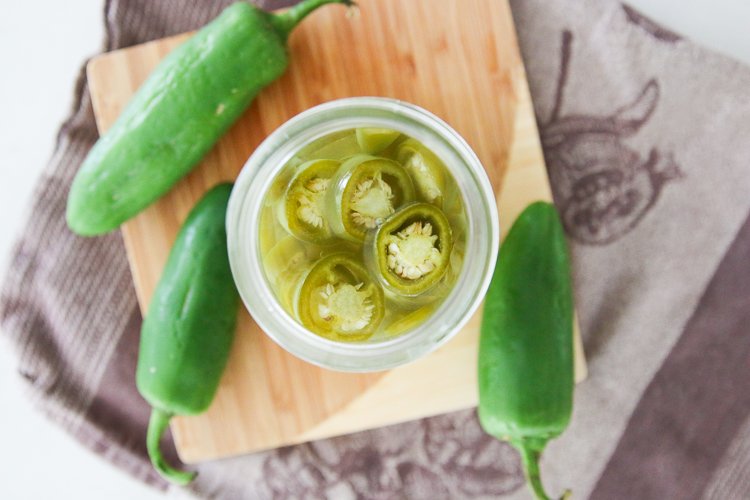



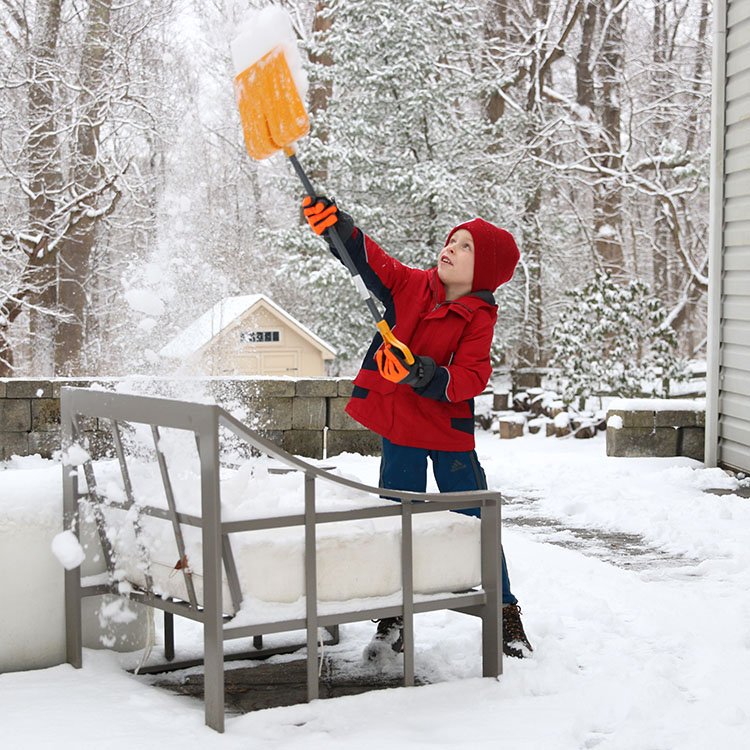

Thank you for sharing your knowledge. I was not aware about gleaning. What a wonderful opportunity to help curb food waste and give to your local Feeding America food bank. #client